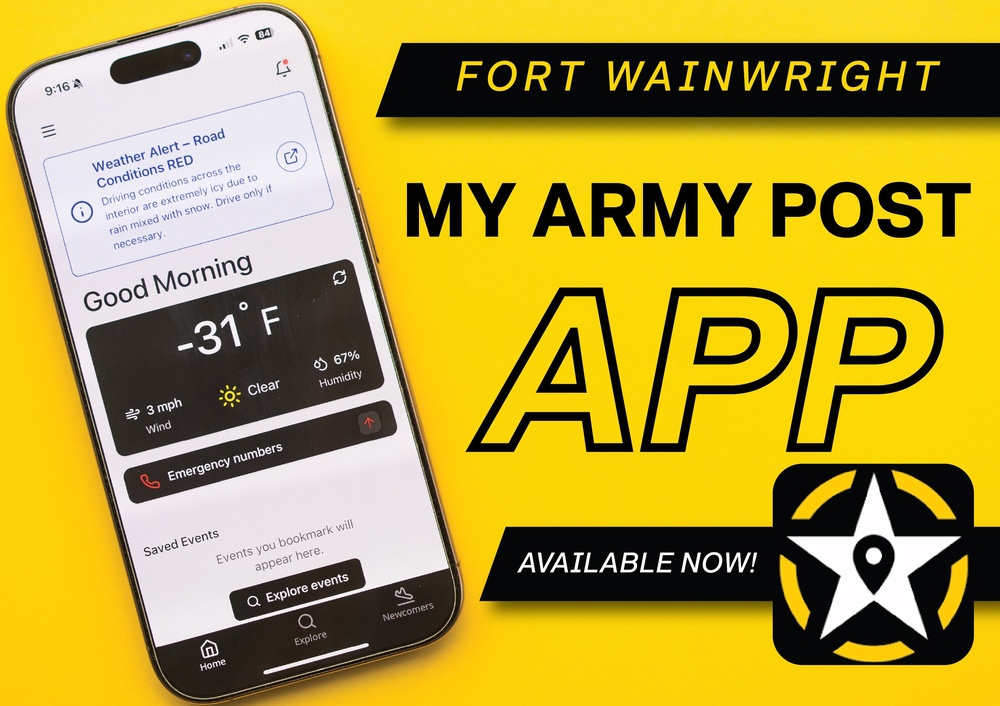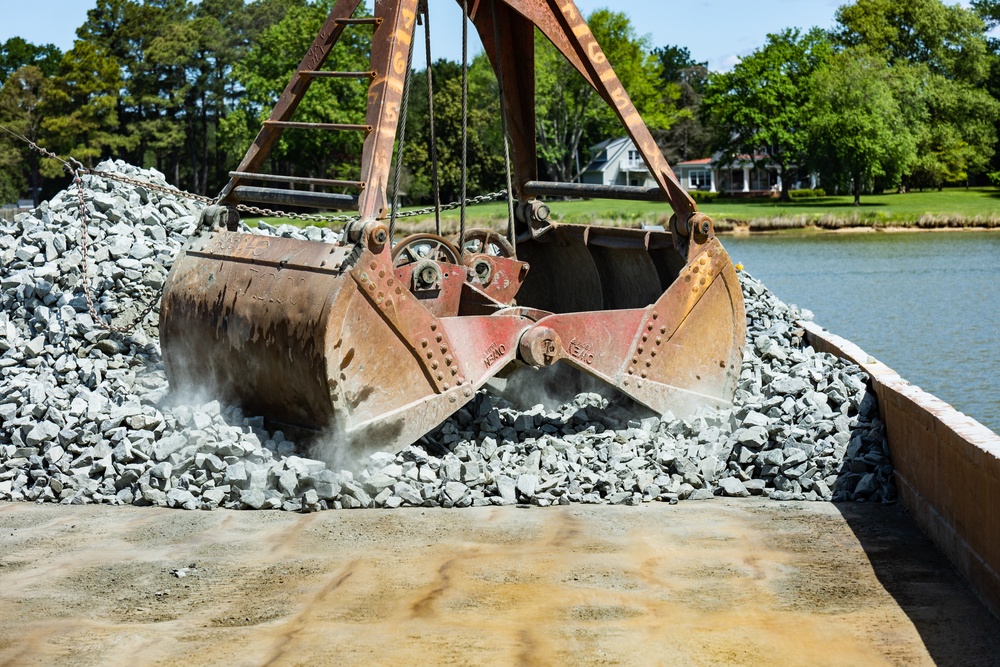DVIDS – News – NUWC Division Newport hosts Naval Meteorology and Oceanographic Command leadership for tactical oceanography discussions
NEWPORT, R.I. – The Naval Undersea Warfare Center (NUWC) Division Newport on Aug. 29 hosted Naval Meteorology and Oceanographic Command (CNMOC) Technical Director Dr. Joseph Calantoni as part of its continuing efforts to support undersea forces through the creation of a new tactical oceanography center.
Calantoni’s visit to the warfare center was after Division Newport Technical Director Marie Bussiere announced on Aug. 27 at the Southeastern New England Defense Industrial Alliance (SENEDIA) Defense Innovation Days the intention to create a National Center of Excellence for Tactical Oceanography, as well as a CNMOC Detachment, at the warfare center.
This initiative is part of a greater effort to take a scalable, enterprising approach to tactical oceanography.
“As part of interconnecting our workforce, Marie and I are embarking on building a common compute and research infrastructure between our commands. Think of this as the cloud on-demand for tactical oceanography,” Calantoni said. “NUWC will need access to all of the data my command is collecting and generating — weather and ocean forecasts, as well as autonomous vehicle data that we are sampling throughout the entire ocean. CNMOC needs these tools to understand how the ocean environment is impacting the systems that are being used by operators.
“This authoritative environment will enable concepts like digital twins, but for integrated oceanography plus undersea warfare (USW) systems.”
Tactical oceanography is the study and application of oceanographic data and tools to support military operations, particularly in naval warfare. It involves the collection and analysis of ocean and atmospheric data to inform decision making and enhance situational awareness for naval forces.
“Maneuvering in the environment is as old as warfare itself. Concepts such as obtaining the high ground in an environment have been used throughout the history of warfare,” Dr. Andy Greene, Division Newport senior technologist for Tactical Oceanography and Operational Environment Effects, said. “What we do at Division Newport is try to understand how the ocean environment is going to impact the systems we and the adversary employ and figure out where there are advantageous positions and tactics.”
Division Newport and the Undersea Warfighting Development Center (UWDC) currently are working with Commander, Submarine Forces (COMSUBFOR) to finalize a 60-month initial plan to enhance USW through tactical oceanography, Bussiere said. This will include working with numerous partners, such as the Office of Naval Research (ONR), the Office of the Oceanographer and Navigator of the Navy (OPNAV N2N6E) and the USW Division within the Office of the Chief of Naval Operations (OPNAV N97), as well as other local organizations.
“NUWC is uniquely positioned from both its responsibility to deliver USW technology and its proximity to the UWDC, the Submarine Learning Center, the Naval Submarine School, and the New London Submarine Base,” Bussiere said. “Along with the Naval War College in Newport and our incredibly diverse industry partners in the Northeast, we can evolve these important capabilities.
“We have the Graduate School of Oceanography at the University of Rhode Island and Woods Hole Oceanographic Institution [in Massachusetts]— both top five schools in the country for oceanography — as well as UMass-Dartmouth and UConn Avery Point with their Oceanography programs. We also have a brand new NOAA headquarters being built on the waterfront next to NUWC.”
Bussiere and Calantoni also issued a call to industry at Defense Innovations Days, noting it can help by developing new environmental sensing technology, novel approaches to big data analysis and management, and cooperative approaches to talent recruitment and retention.
“We have a vision for undersea warfare in which we can leverage the environment to enable the operational commander of theater undersea watch floor to make smart decisions regarding unit deployment and achievability, as well as enable the unit to attain the environmental high ground to gain extra performance margins,” Calantoni said. “At a basic level, the undersea equivalent of using the terrain to one’s advantage involves oceanography, its impact on systems and platforms, and how that informs tactics and decision making.”
These tactical oceanography solutions, Bussiere and Calantoni explained, will come in two forms — material and non-material. Material solutions are any widgets, gadgets, tools or sensors that can fill a gap in tactical oceanography, while non-material examples are more using new insights with existing systems.
“One great material example is distributed temperature sensing. This has been used by the oil and gas industry and academia for 20-plus years. It leverages fiber optics to measure quantities like temperature and pressure along tens of kilometers of cable,” Bussiere said. “The challenge problem for government and industry is to determine how to best use and integrate the technology to support USW.”
As a non-material example, Calantoni explained how CNMOC is responsible for oceanographic models and measurements for the operational Navy. That information, under this way of thinking, can be used to determine how predominant oceanographic features in Navy operational areas of interest impact systems onboard a submarine and if those changes necessitate reevaluating tactics.
“This is where UWDC comes in and it truly becomes a team sport, where tactical oceanography reveals itself as a discipline that seamlessly integrates oceanography, USW system performance and tactics,” Bussiere said. “We did this and while the details are classified, we have successfully trained a number of crews with a new prototype set of knowledge, tools and training modules. This has really gained senior Submarine Force leadership attention and we are being asked to scale and expand.”
This effort, Calantoni and Bussiere explained, began in 2016 when OPNAV N97 created a new program focused on understanding the role of the ocean environment in current and future USW missions. The following year, then Chief of Naval Operations (CNO) Adm. John Richardson established Task Force Ocean, led by OPNAV N2N6E and Office of Naval Research (ONR).
“We took the initiative seriously and applied time and focus to determine what looked right,” Bussiere said. “We started experimenting in an effort to tie oceanography to tactics in the undersea domain, and developed the beginnings of warfighting utility assessments.”
This time and effort helped lead to a series of milestones, beginning in 2023.
“Tom Drake, head of ONR’s Ocean Battlespace Sensing Department — the designated lead for Task Force Ocean — recognized the impact certain lines of effort within Task Force Ocean were having,” Calantoni said. “He worked with the Chief of Naval Research (CNR) to ensure this work had a landing pad and an enduring set of resources. Thus, tactical oceanography was established as a National Naval Responsibility (NNR) by CNR Instruction.
“Having strong ties with UWDC has really helped us up our game. You know there’s a difference between making technological progress and making a warfighting impact — that’s where UWDC came in and kept us humble and honest as scientists and engineers.”
This past year, Calantoni said, COMSUBFOR provided further direction and guidance to warfighting and technical communities on tactical oceanography priorities to support USW war plans.
“My boss, Rear Adm. Ron Piret, is dual hatted as both the commander of NMOC and the oceanographer of the Navy, providing vision and resources for Navy oceanography,” Calantoni said.
“He and I talk about tactical oceanography and undersea warfare a lot, and in turn he’s made vertical cuts to entire programs not only to keep USW whole but also in order to grow it.”
All of this, Calantoni and Bussiere note, aligns with Secretary of the Navy Carlos Del Toro’s Naval Science and Technology Strategy. Specifically, it speaks to having “a decisive understanding of the oceans” and ensuring “we leverage an advance to deliver warfighting edge.”
“Tactical oceanography is an old problem that we are tackling with some new approaches to create an enduring advantage,” Greene said. “At NUWC, we’re hiring oceanographers, acousticians, and ocean scientists as a priority.”
NUWC Newport is the oldest warfare center in the country, tracing its heritage to the Naval Torpedo Station established on Goat Island in Newport Harbor in 1869. Commanded by Capt. Chad Hennings, NUWC Newport maintains major detachments in West Palm Beach, Florida, and Andros Island in the Bahamas, as well as test facilities at Seneca Lake and Fisher’s Island, New York, Leesburg, Florida, and Dodge Pond, Connecticut.
Join our team! NUWC Division Newport, one of the 20 largest employers in Rhode Island, employs a diverse, highly trained, educated, and skilled workforce. We are continuously looking for engineers, scientists, and other STEM professionals, as well as talented business, finance, logistics and other support experts who wish to be at the forefront of undersea research and development. Please connect with NUWC Division Newport Recruiting at this site- https://www.navsea.navy.mil/Home/Warfare-Centers/NUWC-Newport/Career-Opportunities/ and follow us on LinkedIn @NUWC-Newport and on Facebook @NUWCNewport.
| Date Taken: | 10.02.2024 |
| Date Posted: | 10.02.2024 09:55 |
| Story ID: | 482314 |
| Location: | NEWPORT, RHODE ISLAND, US |
| Web Views: | 13 |
| Downloads: | 0 |
PUBLIC DOMAIN
This work, NUWC Division Newport hosts Naval Meteorology and Oceanographic Command leadership for tactical oceanography discussions, by Public Affairs Office, identified by DVIDS, must comply with the restrictions shown on https://www.dvidshub.net/about/copyright.


 Private Internet Access gives you unparalleled access to thousands
of next-gen servers in over 83 countries and each US state. Your
VPN experience will always be fast, smooth, and reliable.
Private Internet Access gives you unparalleled access to thousands
of next-gen servers in over 83 countries and each US state. Your
VPN experience will always be fast, smooth, and reliable.
